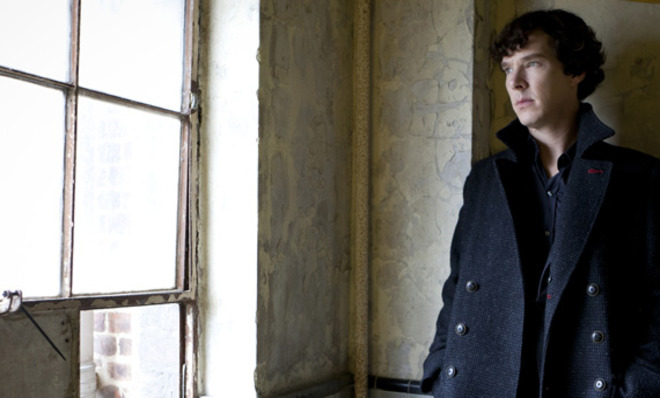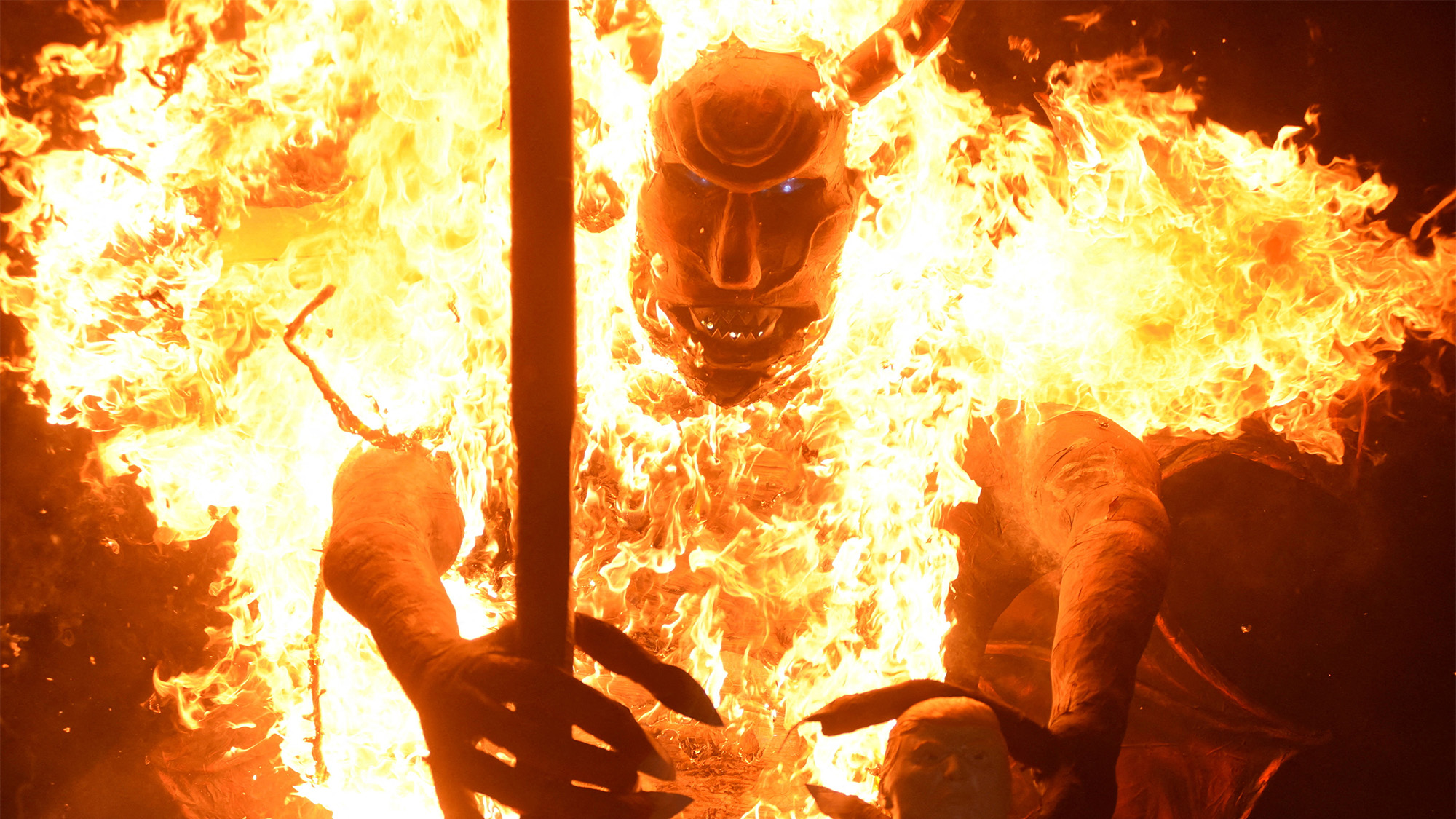How to develop a photographic memory in 4 easy steps
Sherlock isn't the only one who can build a "mind palace"...


Could you memorize the order of a deck of cards in under 30 seconds?
(Hat tip to Josh.)
Don't feel bad; I can't remember what I ate for lunch yesterday. In fact, one-third of British people under 30 can't even remember their home phone number.
The Week
Escape your echo chamber. Get the facts behind the news, plus analysis from multiple perspectives.

Sign up for The Week's Free Newsletters
From our morning news briefing to a weekly Good News Newsletter, get the best of The Week delivered directly to your inbox.
From our morning news briefing to a weekly Good News Newsletter, get the best of The Week delivered directly to your inbox.
According to a survey conducted in 2007 by a neuropsychologist at Trinity College Dublin, fully a third of Brits under the age of thirty can't remember even their own home land line number without pulling it up on their handsets. The same survey found that 30 percent of adults can't remember the birthdays of more than three immediate family members. [Moonwalking with Einstein: The Art and Science of Remembering Everything:]
The thing is, while some people are blessed with a naturally impressive memory, the true memory experts are made, not born. How do you dramatically improve your memory? C'mon, we're gonna build a palace.
The memory palace
The idea dates back to the fifth century B.C. and was first synthesized in Cicero's Rhetorica ad Herennium. So what does a palace have to do with remembering your shopping list? Your memory is not just a hard drive that stores everything equally well. It's particularly good at certain things and terrible at others.
Work with it, you'll be impressed. Work against it and you'll be wandering the supermarket aisles for that one thing that's on the tip of your tongue…
A free daily email with the biggest news stories of the day – and the best features from TheWeek.com
Our ancestors didn't need to remember long lists, they needed to remember routes to resources. Memory champion Joshua Foer, author of Moonwalking with Einstein: The Art and Science of Remembering Everything, penned a piece for the New York Times explaining:
Our hunter-gatherer ancestors didn't need to recall phone numbers or word-for-word instructions from their bosses or the Advanced Placement U.S. history curriculum or (because they lived in relatively small, stable groups) the names of dozens of strangers at a cocktail party. What they did need to remember was where to find food and resources and the route home and which plants were edible and which were poisonous. Those are the sorts of vital memory skills that they depended on, which probably helps explain why we are comparatively good at remembering visually and spatially. [The New York Times]
While we're terrible about remembering lists of random numbers, the human mind is naturally excellent at remembering places. What memory experts do is work with the brain's natural setup to turn hard-to-remember things and fit them into a format that is easy to remember:
The point of the memory techniques described in Rhetorica ad Herenniu is to take the kinds of memories our brains aren't that good at holding onto and transform them into the kinds of memories our brains were built for. [The New York Times]
So what do you need to know about the fundamentals of memory to get cooking?
- We're really good at remembering layouts, routes, and spatial information.
- Our minds are visual.
- We remember things that stand out; things that are absurd, funny, sexual or offensive.
Here's how you combine these principles to remember anything:
1) Build your palace
It doesn't need to be very royal. Basically it can be any building you know the layout of. A good starter palace is your childhood home.
The crucial thing was to choose a memory palace with which I was intimately familiar. "For your first memory palace, I'd like you to use the house you grew up in, since that's a space you're likely to know very well," Ed said. [Moonwalking with Einstein: The Art and Science of Remembering Everything]
2) Construct the images
The things you want to remember (like the items on a grocery list) need to each be associated with an image you won't forget. What type of images do we not forget? Extreme things that stand out. Go for crazy, lewd or funny.
The Ad Herennium advises readers at length about creating the images for one's memory palace: the funnier, lewder, and more bizarre, the better. "When we see in everyday life things that are petty, ordinary, and banal, we generally fail to remember them, because the mind is not being stirred by anything novel or marvelous… Evolution has programmed our brains to find two things particularly interesting, and therefore memorable: jokes and sex — and especially, it seems, jokes about sex. [Moonwalking with Einstein: The Art and Science of Remembering Everything]
3) Place the images in the palace
So how do you remember your shopping list? Think about how you would normally walk through your childhood home and "place" the memorable images in the order you need to remember them along that route.
We're going to array the items of my to-do list one by one along a route that will snake around your childhood home. When it comes time to recall the list, all you will need to do is retrace the steps we're about to take in your imagination…[Moonwalking with Einstein: The Art and Science of Remembering Everything]
So, for example:
- You go in through the front door and standing there is a cow on fire (symbolizing the burgers you need to buy at the store).
- You go up the stairs but they're slick with the fiery cow's dripping blood (you need to buy ketchup too.)
- At the end of the upstairs hall is an enormous human butt (you need to buy hamburger buns.)
Did hearing any of these images make you say "gross" or "disgusting"? GOOD. That means they're working.
4) Go for a walk to recall
Time to remember? Just take a stroll through your palace, visiting each crazy image. You can use this system for most any memory activity. Cicero used it for speeches, connecting the points he wanted to make as items in his palace.
Cicero agreed that the best way to memorize a speech is point by point, not word by word, by employing memoria rerum. In his De Oratore, he suggests that an orator delivering a speech should make one image for each major topic he wants to cover, and place each of those images at a locus. Indeed, the word "topic" comes from the Greek word topos, or place. (The phrase "in the first place" is a vestige from the art of memory.) [Moonwalking with Einstein: The Art and Science of Remembering Everything]
Yes, your mind is going to be full of dinosaurs, naked people and a level of absurdity that would make Salvador Dali cringe. Who knew developing your memory could be so much fun?
Join 45K+ readers. Get a free weekly update via email here.
More from Barking Up the Wrong Tree...
-
 The week’s best photos
The week’s best photosIn Pictures A man's best friend, the elephants in the room, and more
-
 A TikTok trend has Gen Z men leaving streetwear behind for more preppy attire
A TikTok trend has Gen Z men leaving streetwear behind for more preppy attireThe Explainer More than a zipper: Young Black men embrace the ‘quarter-zip movement‘
-
 Codeword: December 12, 2025
Codeword: December 12, 2025The daily codeword puzzle from The Week